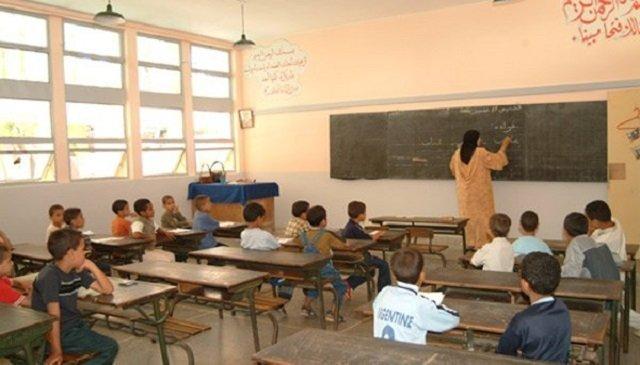Non-formal education: 80 second-chance schools by 2021 non-formal education: 80 second-chance schools by 2021<
On Tuesday 16 October, the start of the 2018-2019 school year for the "2nd chance Schools" was launched. Taking a good place in the men's plan of action presented to King Mohammed VI on 17 September, non-formal education seeks to put an end to the scourge of early school leaving.
200,000 young people drop out of school each year; the phenomenon is most prevalent in the middle schools, where the national dropout rate is 12%. Primary education is also affected, albeit to a lesser extent. While the national primary school dropout rate is 2 per cent, it still stands at 5.6 per cent in rural areas.
As a result, men have put a lot of effort into the 2018-2027 Action Plan. All the more so since the record of non-formal education was strongly criticized by a report from the Higher Council for Education in February 2017. In particular, it had pointed to the weakness of the achievements and their low rate of reintegration.
>67.400 élèves pour la rentrée 2018-2019
As of this year, 67,400 students will register the schools of the 2nd chance for the 2018-2019 school year. Offering a 2-year course, the curriculum of these educational centres is structured around three axes:
-Strengthening literacy and mathematics skills
-assimilation of basic skills in the field of vocational training, depending on the choice of pupils

-Support and follow-up with a view to the integration of young people into the working environment: job search, traineeships, etc.
Interestingly, vocational paths are not imposed but determined according to the socio-economic environment of the centre, in order to identify the occupations which will give young people the most chance in their immediate environment.
To date, the reintegration rate for early school leavers has reached 34 per cent. This figure will change, taking into account the opening of 7 new centres this year and the development of some 30 during the next school year 2019-2020.
The aim is to have 80 educational centres spread throughout the Kingdom's provinces by 2021. In the long run, pupils who leave the classical school will be directed directly to these educational centres.
"the difficulty lies in the rehabilitation and development of the centres, which are at the origin of the disused schools. Since each establishment requires a development budget of 3 MDH, the men sign various partnerships with the local authorities, the INDH, the Mohammed V Foundation, etc. Hssain Oujour, director of non-formal education at men, explains.
>Entre 1.200 et 6.000 DH/an par élève
To date, Morocco has nearly 30 second-chance schools, 22 of which are run by associations subsidized by the Ministry. For each pupil, the subsidy is between 1,200 and 6,000 DH per year, depending on the nature of the support and vocational training.
The fight against school drop-out is also being carried out in a preventive manner, in particular through a "Community Mobilization Programme". Developed jointly with UNICEF, the "Child to Child" programme is mainly based on the shoulders of pupils and their teachers, with the participation of 7,000 schools.
In each of these schools, about 10 students are taught how to complete a standard form for children who have dropped out of school. Accompanied by a teacher, each student "prospect" in his or her nearest neighbourhood, in order to meet and convince both the dropouts and their parents.
"the advantage of this approach is twofold. First, the message gets better when delivered by students. Second, it raises awareness and helps to protect students participating in this program from dropping out of school, so that they do not ever become the victims, "stresses Hssain Oujour.
This census takes place in April-May, and affects between 90,000 and 130,000 children each year. In October, children who drop out of school receive a new visit to encourage them to re-enrol. This enables some 35,000 children to return to school each year.
>Bilan 2017-2018
-65,046 beneficiaries in total
-31,744 students attended the non-formal education programme, delivered by 268 associations. 36% of them have been reintegrated: 7,377 in the conventional system and 4,005 in vocational training.
-mobilization of 1,145 educators, 46 per cent of them in rural areas.
Migrants' children: 7,377 have been integrated into the formal education system.
-1,107 children in difficult circumstances have benefited from non-formal education. Of these, 193 were living on the streets, and 618 were from child protection centres.


 Tags:
Tags: Prev
Prev







